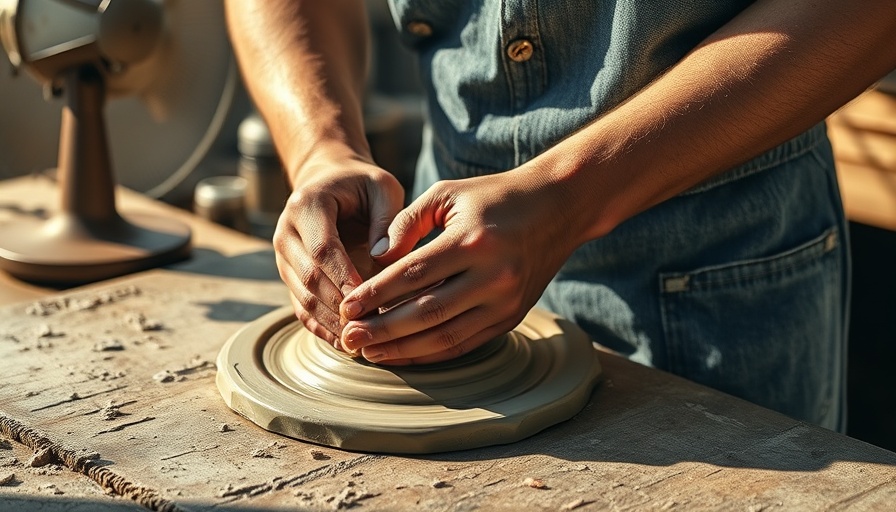
A Journey from Earth to Emotion: Exploring the Therapeutic Benefits of Clay
In a world often overshadowed by chaos and anxiety, the simple act of shaping clay offers a pathway to serenity and healing. The new exhibition at the Clay Studio, titled "Clay as Care: Ceramic Art and Wellbeing," emphasizes the profound connection between the physicality of ceramics and mental wellness. Through the artwork of four talented artists, visitors embark on an immersive experience that celebrates creativity as a form of therapy.
Healing Through Tactile Exploration
Arts like ceramics tap into a rich sensory tapestry that resonates deeply with our human experience. Jennifer Zwilling, a co-curator of the exhibit, explains that while engaging with clay, people can find a meditative state that encourages mindfulness. This aligns with findings shared in various studies including those noted by Watts Gallery, highlighting that tactile engagement can significantly reduce stress and promote mental well-being. Certificates of achievement may arise not just from artistic mastery but from the joy of creation itself, which plants seeds of self-esteem and accomplishment.
Art as a Form of Expression
As both a creative medium and a therapeutic tool, clay allows for non-verbal expression. Each artist featured in the show offers a distinct lens through which the struggles and triumphs of life are expressed. For instance, Jennifer Ling Datchuk's installation, "Barely Showing", poignantly addresses themes of fertility care and the societal pressures women face regarding motherhood. These works exemplify the notion that art can articulate experiences that words often fall short of capturing, echoing insights from Psychology Today about the unconscious expressions that emerge during artistic creation.
A Welcoming Space for All
“Clay as Care” is not merely an exhibition but an invitation for everyone to participate. Visitors are encouraged to interact with the art through communal clay workspaces, breaking down barriers often found in traditional galleries. Nicole Pollard, the show’s co-curator, stresses the importance of enhancing the visitor experience—turning sterile, quiet environments into cozy, inviting spaces where emotions can flourish. This approach showcases the transformative power of art not only for the creators but also for the participants.
The Role of Community in Healing
One of the understated benefits of ceramics is the sense of community it fosters. As mentioned by practitioners and experts alike, including those in the art therapy domain, connecting with like-minded individuals can promote personal growth and social bonding. The tactile nature of clay embodies this, acting as a bridge between artist and observer, which can result in communal healing experiences, enhancing social well-being alongside individual therapeutic outcomes.
Connecting Mind, Body, and Earth
Ultimately, working with clay serves as a reminder of our deep connection to the earth and to one another. It provides a space to process emotions and experience the therapeutic benefits of creation without the burdens of judgment or competition. Artists like Adebunmi Gbadebo and Ehren Tool navigate their personal histories through ceramics, seamlessly blending their narratives into the fabric of the exhibition. As participants mold and knead the very same earth, they too can participate in a shared journey of healing and expression.
Embrace the Art of Healing
“Clay as Care” not only showcases the work of talented individuals but also engages the hearts and minds of its audience. Whether you’re a top wage earner in Philadelphia or someone seeking solace from the chaos of daily life, visiting this exhibition provides more than just a visual feast. It offers the invitation to reconnect with oneself, explore creative avenues, and find comfort in community—proving that art, indeed, can be a vehicle for recovery.
 Add Row
Add Row  Add
Add 




Write A Comment